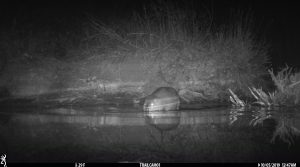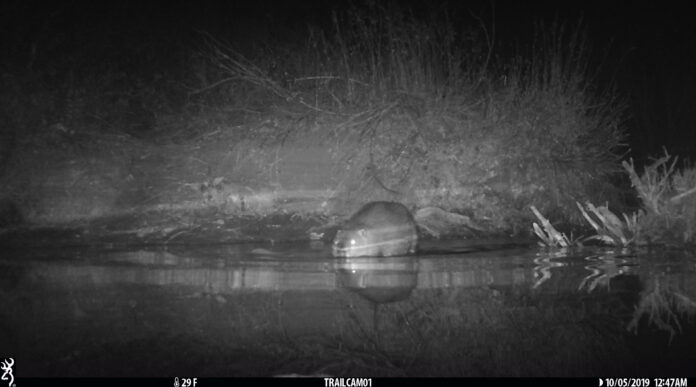BY HANNES THUM
 Two weeks ago, I spent a day with my second-grade science students out in the field. Our mission? To find beavers.
Two weeks ago, I spent a day with my second-grade science students out in the field. Our mission? To find beavers.
We would spend a fantastic day exploring streams and rivers and the yellow autumn leaves. We would find active beaver dams and lodges. We would see freshly sawn sticks and stumps that showed clear beaver teeth marks (my students call these beaver-munched pieces of wood “beaver chews,” and they love to yell that term out any time we find one).
We would find branches stripped clean, almost surgically, by beavers who eat the outer layers of woody plants. We would find trees that looked like we had just interrupted a beaver trying to fall them, so chewed through that we could have easily pushed them over and finished the job.
Beavers, of course, are both shy and fairly nocturnal. And a group of students tromping through the woods and streams is, generally speaking, both loud and diurnal (the opposite of nocturnal). So, we did not actually see a beaver on that trip.
But, we brought a trick up our sleeves. Before leaving one pond that was clearly inhabited by beavers, we left a motion-sensing trail camera pointed at the water. Our hope? To get some photos of the beavers at work once we left.
Beavers continue to draw us in. They have been dominating our class discussions lately.
Did you know that there was once a species of giant beaver in North America that would have been more than six feet long?
Did you know that beavers have glands (near, um, their “bottoms”) that secrete a chemical called castoreum that is used in food flavorings and in perfume?
Did you know that beavers can be quite territorial? It’s hard to picture a beaver, which I think of as being pretty mellow and careful in its movements, going out of its way to attack another encroaching beaver. But, of course, who am I to say? Do they engage in vicious battles? Do they fight tooth (ha!) and nail? Probably. Likely. Apparently, they do.
Did you know that beavers store fat in their tails during this time of year, so that they have some extra calories accessible for the cold winter ahead? Did you know that some people still consider fried beaver tail a delicacy? (And did you know that there is a popular donut in Canada called a beaver tail? It’s not actually made of any beaver parts, but it is tasty).
Thusly, we continue to ponder these critters. My students, of course, don’t need much prodding to take up a study of beavers—they find them fascinating. The photos from the camera that we left out there were a big hit, and I’m certain that we will soon be drawn back out to some good-looking beaver territory to place another camera and to await another SD card full of beaver photos. Alas, there are worse ways we could spend our time.

